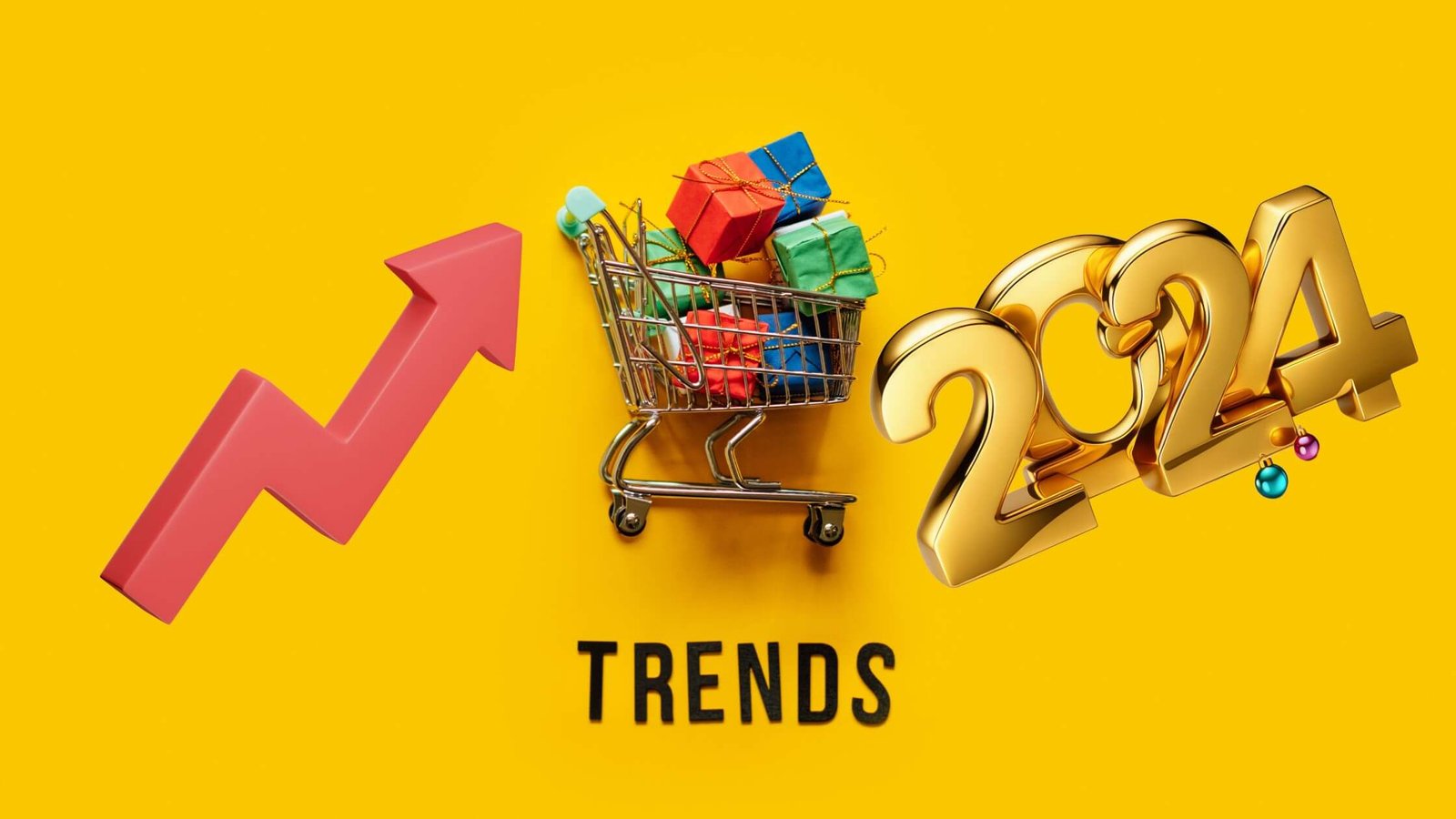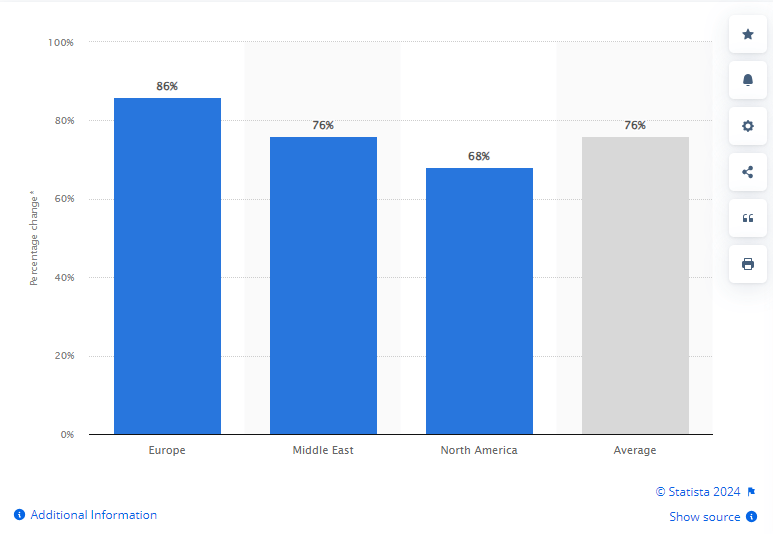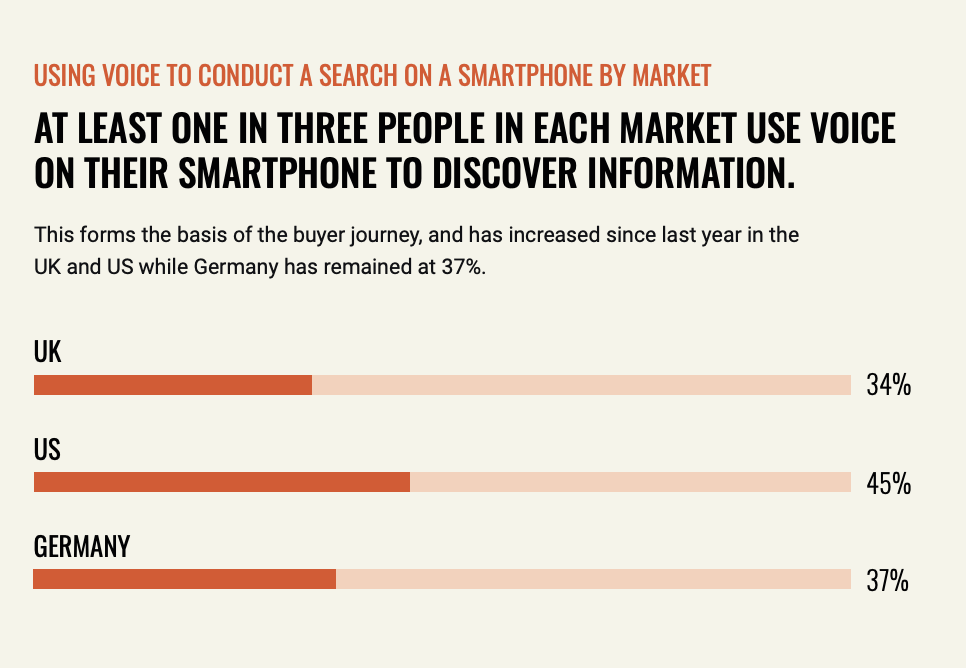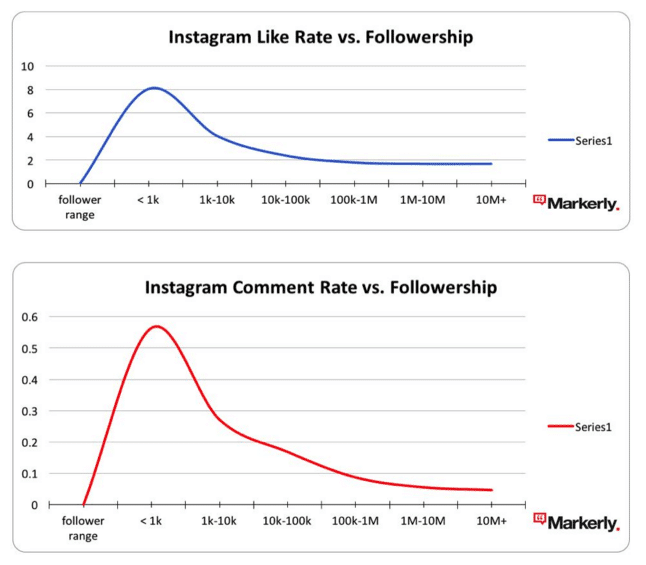E-commerce Trends 2024!! Marketers, seize the opportunities presented by the 2024 e-commerce trends to enhance customer engagement and boost conversions. Retailers, embrace the future by optimizing your store for these key trends to unlock growth. Consumers, stay informed and explore the 2024 e-commerce trends that will reshape your online shopping experience.
Staying up to date on the newest trends in the ever-changing world of e-commerce is not just an option, but a requirement for businesses seeking to prosper.
This year, a slew of technology developments and altering consumer behaviors will transform the digital world.
Artificial intelligence (AI) is no longer a futuristic buzzword; it's becoming the backbone of smart e-commerce. AI-powered chatbots and virtual assistants will offer seamless customer service, answer questions in real-time, and even personalize product recommendations based on individual preferences and browsing behavior. McKinsey & Company predicts that by 2030, AI could boost global e-commerce sales by up to $2.6 trillion.
Top E-commerce Trends 2024
This article will provide an in-depth examination of the most expected e-commerce trends, as well as insights and methods to help firms looking to dominate the online arena.
1. Short-form Video:
Short-form video content, which has grown to be a major force in e-commerce, has forever changed social media platforms. Businesses can use short, interesting movies to promote themselves, thanks to apps like TikTok.
According to studies, people are 60% more likely to watch short videos than longer videos. When businesses use popular music, effects, and video ideas on TikTok, they're not only making content, but they're also connecting with their audience.
TikTok's commerce features, such as video shopping ads and a TikTok shop, show how useful the site could be. With more than a billion shoppers on TikTok, the "personalized discovery" tool gives companies a big audience.
TikTok asserts that a notable 63% of successful ads effectively convey their message right from the start. Capturing their audience's attention early on proves pivotal, as this initial engagement significantly increases the likelihood of viewers watching the ad in its entirety.
2. Direct Messages (DMs) : Personalizing Support
Direct messages (DMs) are becoming more popular as a way to help customers with online shopping, especially on Instagram. Businesses can connect with their customers on a more human level with Instagram for Business.
Instagram Direct is an in-app messaging service that lets people share pictures, stories, and other things to strengthen relationships and boost sales by connecting with people on a personal level.
Hubspot research shows a big rise: 19% of customers have contacted customer service through direct messages (DMs) in the last three months, which is 45% more than in 2022.
A substantial 75% of consumers express a preference for engaging with brands through private messaging channels over traditional methods. Despite this inclination, an interesting challenge arises, as one in three individuals encounters difficulty recalling the specific location of a particular conversation thread.
3. Social Commerce:
There is a big change happening in the world of social commerce. Platforms like Instagram Shops are leading the trend toward becoming a straight sales channel.
In a survey, Instagram ranked highest in perceived in-app shopping experiences with 30% of the vote, followed closely by Facebook at 29% and TikTok at 15%. This indicates Instagram's significant appeal in delivering an engaging shopping experience, despite lingering trust concerns.
Shopping features added to social media sites are becoming a major force in the world of online shopping, turning what was once seen as a trend into a major shift. 47% of Instagram and TikTok users are not just browsing; they are actively ready to buy things. This means that businesses that know how to use social commerce well will benefit.
A noteworthy 44% of Instagram users engage with the app for shopping purposes on a weekly basis. Whether this involves making an immediate purchase or gathering information for a future purchase, the consistent use for shopping activities underscores the platform's role as a dynamic e-commerce hub.
4. Sustainable Shopping:
Consumers are changing their choices because more and more people want sustainable goods. In fact, 46% of people are more likely to buy from companies whose values are similar to their own.
Prioritizing sustainable production, packaging, and sourcing is likely to be a big trend in 2024.
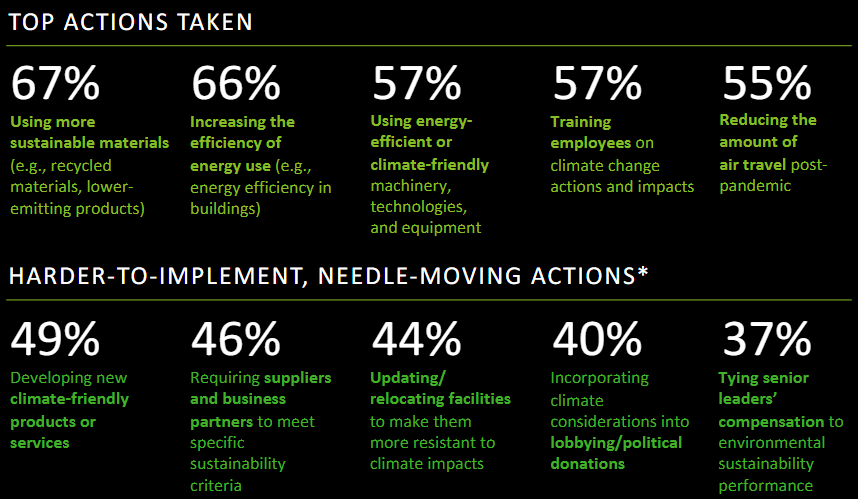
As people become more aware of the environment, companies that adopt and support sustainability are not only meeting customer needs but also reaching a market that cares about doing the right thing.
5. Same-day or Next-day Delivery: Meeting the Need for Speed
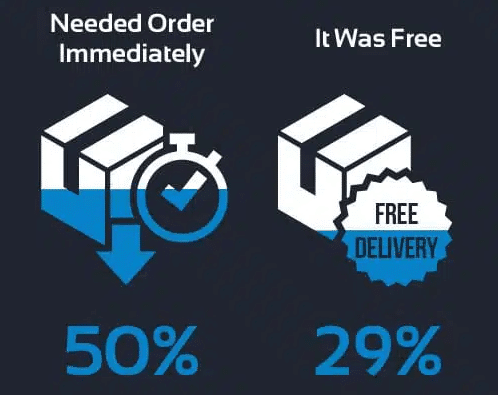
People now expect deliveries to happen quickly, so businesses need to offer same-day or next-day delivery choices. People are willing to pay more for faster delivery times, according to studies.
A lot of shopping sites offer same-day delivery, and some even offer two-hour delivery, which is even more convenient.
Nearly half of customers (41%) are prepared to pay extra for same-day delivery, and almost a quarter (24%) would pay extra to have their products delivered within a one- or two-hour window that they specify. Source
According to research, businesses that don't offer same-day or next-day delivery risk losing customers to competitors. This shows how important fast service is for keeping customers happy.
6. Augmented Reality and Virtual Reality: Enhancing the Shopping Experience

About 32% of consumers use AR while shopping, with an estimated 1.3 billion AR device users expected by the end of 2023. AR generates 200% more engagement than non-AR options, and 61% of retailers prefer consumers with AR experiences. Furthermore, 71% of e-commerce buyers would shop more if AR technology becomes more widely available.
With the advent of AR and VR, online shoppers will soon be able to see things in their natural settings, making for a more satisfying buying experience overall.
In 2022, Snapchat showcased the promise of immersive experiences with its integration of augmented reality, which lets users try on and buy things through the app.
The use of augmented reality by Ikea allows customers to virtually arrange 3D objects in their homes, giving them a realistic view and making it easier for them to make an informed purchasing decision.
7. Livestream Shopping: Interactive Retail Experiences
Livestream shopping, which was first done on Amazon Live and TikTok, is more than just pictures and details of the products.
All of TikTok's shops now have the LIVE shopping ads feature, which lets sellers reach app users through live videos and make it easy for them to buy products directly. This method is interactive and connects sellers and buyers in real time, which increases engagement and sales.
Because of the COVID-19 pandemic, e-commerce grew a lot. This led to new trends in the industry, with social commerce and live commerce becoming the most popular.
Livestream e-commerce uses digital platforms and live video content to market and sell goods, giving customers a fully digital experience with two-way contact. In contrast to traditional home shopping TV, this style lets users quickly make purchases while watching broadcasts, which speeds up the buying process.
!
Livestream shopping ??
Livestream shopping represents one of the latest emerging trends, introducing interactive content that enables businesses and influencers to engage with their audience while showcasing and selling products through live broadcasts.
8. Automation and Chatbots for Online Ordering:
Quick response times are crucial in customer experience, with 90% of respondents in Hubspot Research considering an "immediate response" to a customer service question as highly important.
For them, an "immediate response" means within 10 minutes. The challenge arises in a globalized world with a single time zone contact center and limited availability. Chatbots offer a solution by providing real-time initial responses and, in some cases, handling customer interactions 24/7.
Automation and robots are making it easier and faster to place orders online by streamlining the process. There are over a million people who use Facebook Messenger, which is a great platform for sellers to market, sell, and help customers.
Using chatbots to handle orders cuts answer times by 25% and raises the number of orders that are completed by 20%. This trend not only makes things run more smoothly, but it also helps customers have a better experience.
Currently, 23% of customer service organizations employ AI chatbots in various capacities. However, customer expectations remain high, as 75% anticipate companies to leverage new technologies for enhancing their overall experiences.

9. Mobile: The Growing Preference for Mobile Shopping
Consumers using their mobile devices, such as phones and tablets, to buy goods and services are responsible for a significant portion of the growth in e-commerce globally. According to Statista's Market Insights, mobile e-commerce sales reached $2.2 trillion in 2023, constituting 60% of total global e-commerce sales.
The proportion of mobile e-commerce within the overall e-commerce landscape has steadily risen, climbing from 56% in 2018 to an anticipated 62% in 2027.
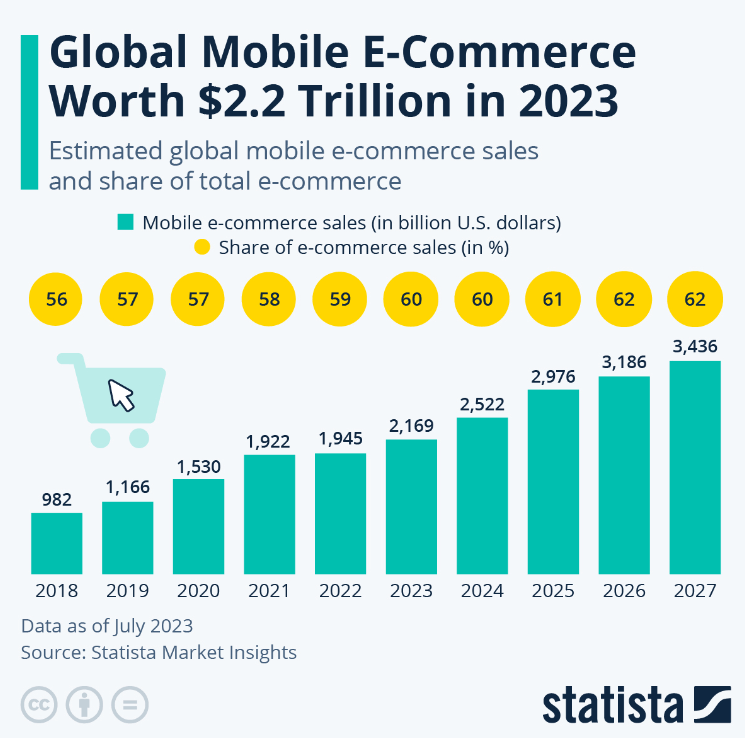
The surge in mobile e-commerce sales has outpaced this trend, reflecting the sector's robust global expansion. Statista analysts project a substantial increase to $3.4 trillion in mobile e-commerce sales by 2027, a significant contrast to the $982 billion generated in 2018.
As consumers increasingly spend time on their mobile devices, valuing the convenience of fulfilling their growing online shopping needs anywhere, whether on the go or at home, the trajectory suggests further growth in mobile e-commerce sales.
10. Product Videos:
High-quality product videos are emerging as a powerful way to address consumer questions and emotions more effectively than text. Creating videos showcasing product design and functionality provides a dynamic and immersive experience.
Recent studies suggest that product pages with videos witness a 35% increase in conversion rates. By leveraging the visual appeal of product videos, businesses can establish a deeper connection with consumers, enhancing the overall shopping experience.
Sharing business details and product information proves effective for driving increased sales. How-to videos and explainer videos are commonly chosen methods, with 45% of global B2B marketers opting for training videos and 39% for client testimonials.
Global online videos reach 92.3% of internet users, with 91% desiring more brand video content. Video constitutes 82.5% of internet traffic, and 91% of marketers incorporate it into their strategies.
Short-form videos engage 66% of consumers, influencing 89% of purchase decisions. Websites with videos enjoy an 88% increase in user engagement. In the U.S., 85% of internet users regularly consume online video content.
YouTube dominates as the preferred video marketing platform (90% trust). 'Live' video content, utilized by 36% of marketers, remains an untapped opportunity.

https://www.demandsage.com/video-marketing-statistics/
11. Subscriptions on the Rise:
From beauty boxes to coffee deliveries, subscription models are gaining popularity. This shift reflects a consumer preference for convenience and curated experiences. According to a report by McKinsey & Company, the subscription box market is expected to reach $168 billion globally by 2025.
FabFitFun, a women's lifestyle membership, offers quarterly or yearly subscriptions for curated boxes containing six to eight full-size items. With 200 million subscribers, members can select from a variety of categories, including fashion, fitness, beauty, wellness, and more.
In alignment with the trend that 80% of consumers prefer personalized experiences, FabFitFun enables subscribers to customize items in their quarterly boxes. This approach to personalized subscription memberships not only enhances the consumer experience but also fosters customer retention and boosts revenue.
The subscription trend isn't limited to physical products. Services like streaming platforms, meal kits, and even software-as-a-service (SaaS) companies are adopting subscription models, catering to the ever-growing demand for convenient and personalized experiences.
12. "Multi-local" business
The landscape of e-commerce is poised to maintain its intense competitiveness throughout 2024, with customer experience emerging as the decisive factor setting brands apart.
The evolution of online shopping towards a more global paradigm, where consumers actively seek brands and products from an international spectrum rather than limiting their online purchases domestically, necessitates a strategic shift for brands. Embracing a multi-local commerce strategy is becoming imperative.
This approach not only provides shoppers worldwide with a seamless buying experience but also enables retailers and brands to extend their reach. In doing so, they can distinguish themselves amidst the competitive landscape by elevating the standards of customer experience.
13. Voice & Image Search
E-commerce trends in 2024 highlight the increasing importance of voice and image search optimization. Voice search, utilizing voice commands and speak-to-text technology, is anticipated to contribute significantly to e-commerce transactions, with an estimated global value of 20 billion U.S. dollars in 2023.
This marks a fourfold increase from just two years prior. Furthermore, the prevalence of digital voice assistants is expected to reach 8 billion in 2024.
To capitalize on this trend, websites should optimize for voice search with natural language keywords and structured data markup and consider incorporating voice-activated product demos and chatbots.
Simultaneously, image search is gaining prominence, enabling users to find products by uploading images or using visual descriptions. This functionality enhances the online shopping experience by allowing users to locate items visually and facilitating searches without the need for typing.
Voice search technology plays a significant role in the buyer journeys of consumers, with 45% of Americans and over a third of individuals in the U.K. and Germany utilizing it during the "awareness" stage of the marketing funnel. This stage involves researching products and brands, highlighting the growing importance of voice search in shaping consumer awareness and decision-making processes.
14. Checkouts that are quick and easy
It is now more important than ever to guarantee a smooth and trouble-free purchasing experience. This includes making sure that all of your online store's features work well on PCs, cellphones, and other mobile devices.

BAD Checkouts
Aside from having effective search capabilities, the UI should be simple and straightforward to use. Streamlining and improving the checkout process is also crucial.
Using a trustworthy payment gateway like Stripe is a suggested strategy. Customers have the freedom to choose the payment method that best suits their needs because Stripe offers several ways and lets customers save their details for future purchases.
Make sure there are a lot of different ways customers can pay, but also that the checkout process is easy and quick. Ask only the essential questions of shoppers. One way to boost conversion rates and decrease cart abandonment is to make things as easy as possible to use.
15. Marketing with micro-influencers
The e-commerce trend of Micro-Influencer Marketing is shifting towards authenticity and relevance.
Brands are increasingly focusing on micro-influencers and nano-influencers with niche audiences who can provide genuine reviews, tutorials, or promotional content to reach specific target audiences. In this transformation, authenticity and engagement take precedence over reach in influencer marketing campaigns.
Younger generations, particularly Gen Z, value social responsibility, leading to a demand for transparency and genuine experiences. Polished ads and concealed partnerships are giving way to real, honest reviews and connections with relatable individuals.
The rise of micro-influencers, trusted for their niche expertise and authenticity, is likely to continue, with influencers championing transparency, advocating for positive change, and prioritizing authentic connections winning over a value-driven audience.
Markerly says that brands should go after Instagram users with between 1,000 and 10,000 followers, who are called "micro-influencers." When brands work with micro-influencers in this range, they can get high engagement rates from a large enough following. Experticity recently did a study that found micro-influencers have 22.2 times more talks on Instagram than regular users. The micro-influencers' passion and knowledge in their special interest areas are the main reasons for this higher level of engagement.
E-commerce Trends to Watch for in 2024:
As we look deeper into the complicated world of e-commerce trends in 2024, it's clear that technology, changing customer habits, and new business ideas are changing the digital world.
The above-mentioned trends are not separate units; they are interconnected threads that tell a story of change and growth. Businesses that use these trends, like the personalized appeal of short videos and the immersive experiences AR and VR offer, are not just changing; they are paving the way for the future of e-commerce.
In this exciting journey into the future, companies need to do more than just follow trends. They need to help shape them.
In 2024, the people who will be at the top of e-commerce will be those who can see changes coming, are open to new ideas, and put a high priority on making technology and human relationships work together seamlessly. While we're figuring out how to handle the ever-changing world of e-commerce, these trends can help businesses not only stay alive but also grow in the digital world.
